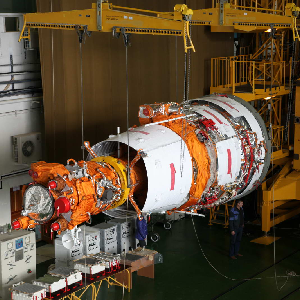Scientists from the Institute of Space Device Engineering of Samara State Aerospace University (SSAU) started to receive telemetry of the magnetometer “Shtil”, which went into space on March 13 on-board the Earth’s remote sensing spacecraft “Resurs-P” №3.
The data analysis will help the scientists and specialists of the Rocket and Space Centre “Progress” to minimize the negative impact of the space magnetic fields on the accuracy of satellite equipment.
The data analysis will help the scientists and specialists of the Rocket and Space Centre “Progress” to minimize the negative impact of the space magnetic fields on the accuracy of satellite equipment.
“Threshold exceeding of the magnetic field inside the satellite leads to the equipment malfunction. Therefore, the data transmitted by “Shtil” is extremely important for the experts.
The sensors of our device are also able to follow the fluctuations in the power supply circuit. And if the data appear that the voltage is beyond the design limits, it will be the basis for beginning tests of the main satellite equipment by engineers of the RCC “Progress”, - underlined Arseniy Ilyin, the device developer, a graduate student of SSAU Institute of Space Device Engineering.
For reference
Series of the magnetometers “Shtil” has been created in SSAU Institute of Space Device Engineering (ISDE) under the supervision of its Director, Professor Nikolay Syomkin, and they should be placed on-board the Earth’s remote sensing satellites of “Resurs” series (they are being designed and manufactured by the RCC “Progress”).
The devices “Shtil-M” are equipped with six sensors that measure magnetic field in the different unit compartments, fix the electrical discharges and the space environment impact on the equipment operation.
The first “Shtil-M” worked on the spacecraft “Resurs-DK” in 2006. The second and the third (series “Shtil-M”) went into orbit as part of “Resource-P” (in 2013) and “Resource-P” No. 2 (in December 2014). The fourth unit is set on-board the Earth’s remote sensing spacecraft “Resurs-P” №3, which transmitted the first images from orbit on March 23, 2016. The third spacecraft of “Resurs-P” series together with the previously launched satellites “Resurs-P” No. 1 and No. 2 is intended to form the first Russian civilian Earth’s remote sensing system that will work upon the end of testing “Resource-P” No. 3 in orbit.
 RU
RU  EN
EN  CN
CN  ES
ES 